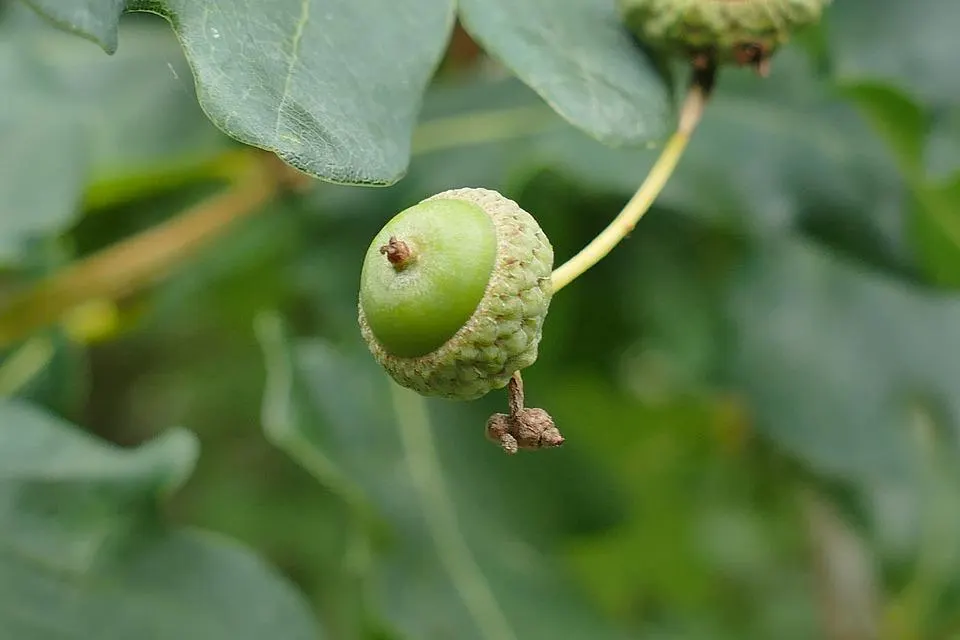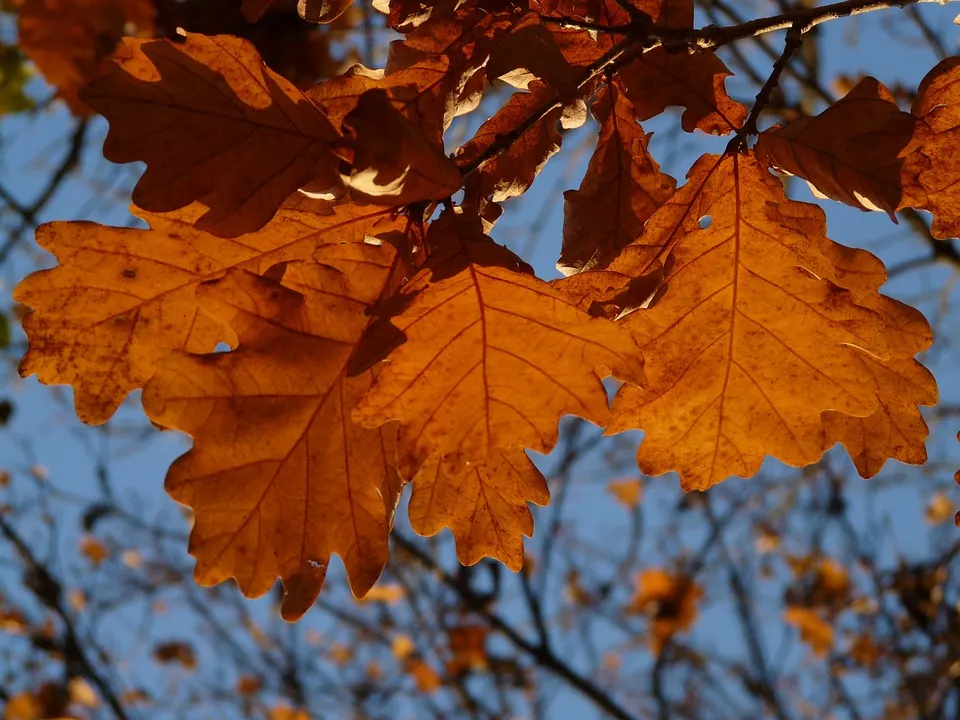Sessile Oak, the National Tree of Ireland
The Sessile Oak tree, known scientifically as Quercus petraea, is the official national tree of Ireland. It might not be as famous worldwide as the English Oak, but it’s still loved by the Irish folk as a national treasure. Many grow it as a bonsai due to the stunning leaf shape and acorns.
The national tree of Ireland grows to massive heights and can live for thousands of years. The Sessile Oak also has several meanings and uses, not only in Ireland, but also in the United Kingdom and several parts of Europe. Join Bonsai Alchemist as we share more details about its past and symbolism.
Why Sessile Oak Is The National Tree Of Ireland
Charles Haughey served as prime minister, or Taoiseach, on three occasions. The period that matters the most is between 1987 and 1992, which is the last time he held the position. Also, you need to bear in mind that the Tree Council of Ireland was formed in 1985 as a non-government association with volunteers. Why is this important to the story of the Sessile Oak?
Well, Charles appointed the Sessile Oak as the national tree of Ireland in 1990, which coincides with the timelines mentioned above. It was chosen for its strength and versatility, separating it from the English Oak that’s popular in the rest of the United Kingdom.
What Does Sessile Oak Symbolize In Ireland?
Ireland considers the Sessile Oak to be the king of oak trees, which is a shared opinion that stretches into Scotland and Wales. It represents fertility and strength, shown in how it can live for more than 1,000 years in the right conditions. The acorns are also easy to propagate, which relates to the fertility aspect.
Celtic tradition considers the Sessile Oak to be one of the sacred trees, especially among Druids. In the 8th century, Brehon Laws demanded that you forfeit two cows if you were found in violation of chopping down an oak tree. Today, having one as a bonsai is a prized possession among many enthusiasts, as the English and Turkish oak trees are more well-known.
Is the Sessile Oak Tree Grown Anywhere Else?
The Sessile Oak is well distributed through Europe, specifically in the United Kingdom. Many people mistake it for the Pedunculate oak, but there are a few minor differences. Other countries where it’s popular include Scotland and Wales.
Although perhaps not as popular, you can also find it in Iran and Anatolia. There are a few Asian areas south of Russia where might find a few, but nothing as close to the volume in the U.K.
What Does The Name Sessile Oak Mean?
The word ‘Sessile’ in botanical terms means to be fixed in one place or be immobile. It has reference to the fruit being attached to twigs or branches without a stalk. In the case of the Sessile Oak, it has the distinguishing feature of acorns attaching directly without any stalks, unlike its counterpart, the Pedunculate oak.
What Is Sessile Oak Tree Also Known As?
Many other names for the Sessile Oak are prevalent in different countries. A few of the more popular ones include the Irish Oak, Cornish Oak, and Durmast Oak. The second name is better known in Cornwall. For those who aren’t familiar with this species, they simply refer to it as an oak tree.
What Are the Products and Uses Of Sessile Oak Tree?
Let’s begin by looking at the value to wildlife. The Sessile Oak supports more life than most trees, especially small mammals, birds, and insects. These also lure larger birds and predators, providing a source of food and shelter in the wild. Mosses and lichens love the bark, while bats and birds may make use of deadwood cavities to build nests.
Of course, the acorns serve as sustenance for many animals, such as squirrels, badgers, and jays. Butterflies and caterpillars love the leaves while on the tree, while fungi and beetles feed on the foliage after they’ve fallen to the ground.
Ireland and several parts of Europe use the Sessile Oak for furniture and construction. Some examples include chairs, tables, wardrobes, building components, and ships. The wood is also used to make veneer, barrel staves, and cabinets. In the winter, the logs burn long into the night and produce plenty of heat.
In terms of medicinal properties, the leaves, acorns, and bark are known to be remedies for some ailments, such as inflammation, diarrhea, and kidney stones. Bakers use acorns to make flour for bread. The ancient Romans were able to use the tannin in the bark for leather, a practice that remains to this day.
How Do You Identify Sessile Oak?
As a deciduous tree, the Sessile oak loses its leaves in the winter, especially when it’s exceptionally cold. If you’re wondering how to identify it in a field full of trees, make sure you look for these properties:
- Bark/Wood: The bark is usually a dark gray color. Young trees remain smooth, but small fissures will form as they mature.
- Leaves: The leaf size can be anywhere between 2.5 and 5.5 inches. There are usually five to six lobes that are even in size.
- Flowers: Sessile Oak flowers appear in spring, and you can tell the male ones from the female with catkin clusters.
- Seeds/fruit: As with most oak trees, the Sessile has brown or copper acorns that take six months to fully develop. They are easy to propagate but need a wintering period.
- Other visual aspects: The most outstanding feature is how tall these trees grow, considering they can live for thousands of years. When you see one in the wild, it’s no wonder birds and other animals love making a home out of it. It’s truly majestic in appearance.
Comparison With The The Pedunculate Oak
The stalkless fruit of the Sessile Oak is only one characteristic that sets it apart from the Pedunculate Oak. Botanists have spent several years trying to separate them, as they’re not so easy to tell apart when you first see them. However, another significant difference lies in the soil.
The Sessile Oak is more fond of shallow and sandy soil that’s more acidic than alkaline. It also loves growing in rocky areas or at heights of 950 ft or higher. The Pedunculate Oak enjoys rich, deep soil on lower lands and plains, while it doesn’t love the rain as much as the Sessile counterpart.
How Long Do Sessile Oaks Live?
In the wild, Sessile Oaks can live for more than 500 years, with some stretching over a thousand. Even when reduced in size and grown in backyards, they’ll serve as lifelong companions to several generations. The oldest known tree is the Pontfadog Oak, which lived for more than 1200 years in Chirk, North Wales. Sadly, strong winds caused it to break and fall over, leading to its death in 2013.
Can You Bonsai A Sessile Oak Tree?
Any oak tree is easy to grow and maintain as a bonsai, and the same applies to the Sessile Oak. It doesn’t matter if you develop it from an acorn, 2 week seedling, cutting, or from the local store. The strong wood, gorgeous leaves, stunning flowers, and sturdy acorns are a wonder to behold.
How To Care For A Sessile Oak Bonsai Tree
If you want to grow a Sessile Oak as a bonsai, there are a few factors you need to consider. While we do have an extensive bonsai tree care guide, not all the elements are universal. Here’s what you need to know about the species.
Sunlight
The Sessile Oak is happy with full or partial sunlight, as long as it can get about 6 hours of light for the day. We recommend placing it where it can get morning light until noon so that it can perform photosynthesis early in the day. They don’t mind living inside homes, as long as you put them near a window that provides sunlight for a few hours.
Size and Maintenance
You’ll want to do some hard design pruning in early spring or late winter before new shoots appear on your Sessile Oak bonsai. When new stems break out and grow quickly, you can cut them back to the second node to encourage branching. Steer clear of removing all the leaves, but make sure to prune big leaves so that the tree can develop smaller ones.
Water
The best technique for watering the Sessile Oak bonsai is drenching the soil and then waiting for it to dry before you apply more. In spring and summer, you’ll notice an increase in watering, but make sure the roots don’t remain wet in autumn and winter. It’s a clear way to invite root rot and other diseases. Feel the soil with your fingers to see how dry it is.
Fertilizer
You can choose between a liquid or solid fertilizer, as the Sessile Oak is happy with both. For the former, make sure to apply it once a week, while you can do so every four weeks with solid pellets. Don’t use an NPK value that’s high in nitrogen, as it will encourage huge leaves, which you don’t want on your bonsai.
If you want to, you can still apply some food in autumn, just in lower quantities. It helps the oak store carbohydrates for winter when it goes dormant. However, don’t give it any fertilizer when winter arrives, as you’ll be overfeeding it.
Soil and Container
As mentioned when comparing it with the Pedunculate Oak, the Sessile Oak prefers slightly acidic soil. You can get away with a standard bonsai mix with good drainage, but remember not to have high nitrogen levels. Place some drainage rocks at the bottom, or make pumice and perlite layers to promote ideal water drainage and aeration.
We recommend a shallow bonsai container, but make sure it’s heavy to support the weight of the tree. You can repot every two to three years for younglings and four to five years for more mature ones.
Styles and Designs
You’ll love developing full foliage on a Sessile Oak bonsai. Aim for a formal upright with tiered branch levels along the way up to the tapering point. If you want to be artistic, you can also make it a literati bonsai with carvings and wild shapes, or go for slanting or informal upright.
We don’t recommend a cascade style, although you can try a semi-cascade with a soft, young branch. If you have a wide enough container, you can aim for a bonsai forest to mimic Druidic or Celtic groves. However, keep in mind that they grow fast and wide and will need air and space between them.
Insects, Pests, and Diseases
If you love butterflies and moths, the Sessile Oak bonsai will attract them when the flowers appear, as well as some other pollinators. The most significant concern is caterpillars that may feed on the leaves. Aphids, scales, and oakworms may also cause problems, but watch out for powdery mildew in the winter.
Final Thoughts
If you have some Irish ancestry in you, we recommend you get your hands on the Sessile Oak bonsai as the national tree of Ireland. It has several outstanding qualities, but you may want to keep an eye out for pests that want to live in the small tree. While they can handle it in the wild, your tiny bonsai will quickly die if not protected from them.
For anyone that has a Sessile oak tree or bonsai at home, please share pics with us on any of our social media channels. We would love to see how well you’ve managed to do with them. You can also tell us how you obtained and cultivated it over the years.







